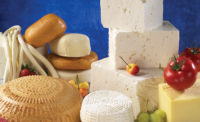Labels indicating a more clear 'use by' date can combat food waste
Labels indicating “best if used by” and “use by” indicate quality and food safety, respectively. They need to be accompanied by a consumer-education campaign.

An estimated 133 billion pounds of food is wasted in America each year, according to the Economic Research Service of the U.S. Department of Agriculture. The Environmental Protection Agency estimates that approximately 21% of the waste that reaches landfills and incinerators is food, representing $161.6 billion worth of food thrown away.
With numbers like that, it’s no wonder that stakeholders across government agencies, the food industry, consumer groups and academic institutions are looking at ways to reduce food waste that will help to increase U.S. food security and enhance sustainability.
These efforts on food waste focus on three steps – reduce, recover and recycle – to stop food from ending up in a landfill. First, methods to reduce food waste include addressing on-farm and in-plant waste and educating consumers to avoid confusion about date labels and product safety. Second, food recovery methods include “sharing tables” in schools and expanding donations of safe, nutritious foods, especially in areas with high levels of food insecurity. Third, recycling efforts repurpose food waste through composting, generating energy through methane digesters and feeding animals, among other initiatives.
Develop a comprehensive policy
Because milk and dairy products are perishable foods, they frequently attract scrutiny as a contributor to food waste. IDFA has worked with a number of dairy foods companies to develop a comprehensive policy that addresses dairy food waste at several levels. The policy addresses voluntary date labeling, consumer education and efforts to reduce barriers to food donation and recycling.
IDFA is working with Rethink Food Waste through Economics and Data (ReFED) to identify voluntary and cost-effective ways to reduce food waste throughout the supply chain. ReFED was formed by several foundations in early 2015 to create an action plan for working with businesses, government officials and nonprofit organizations.
ReFED found that 44% of food waste is generated at the consumer level and another 40% at retail. Several studies show that consumers don’t understand the meaning of date labels and whether a food is safe to be consumed after the date on the label. For example, a 2015 study published by the Johns Hopkins Center for a Livable Future reported that nearly three-quarters of consumers surveyed (72%) use their “senses” to determine if milk is ready to be thrown out, while more than one-third (39%) said they relied on “use by” dates. Others reportedly rely on “sell by” dates (22%), how long the milk had been open (18%) and how the milk had been stored (12%).
Quality dates on labels
To help combat this confusion, IDFA supports the development of standardized terms to indicate quality dates on food labels. We’ve asked our members to consider participating in a voluntary initiative to standardize date labels on consumer food products packaging.
The Food Marketing Institute (FMI) and the Grocery Manufacturers Association (GMA) have proposed that manufacturers and food retailers begin using labels that say “BEST if Used By” or “USE By “on package labels. “BEST if Used By” would be a quality indicator, informing consumers that the taste and appeal of the product is best when consumed by the label date, but it could still be safely consumed after that date. “USE by” would be a safety indicator, telling consumers to finish or dispose of the food product by the date on the label. The organizations are calling for widespread adoption by July 2018.
This voluntary effort is not without hurdles for the dairy industry. Laws and regulations in eight states require specific “sell by” dates for fluid milk products, which would prevent dairy companies from adopting the standard nationwide. State differences make it difficult for dairy companies to market products nationally and regionally and can contribute to consumer confusion.
Consistent, voluntary labels
IDFA is committed to working with states to ensure that our members can adopt consistent voluntary date labels. Otherwise a comprehensive federal program may be necessary to reduce consumer confusion and food waste. Rep. Chellie Pingree (D-Maine) introduced a food waste bill in Congress last year and is expected to raise it again in the coming months.
It is essential to couple any changes made to date labels with a consumer education campaign that explains how to read and use the date labels and how best to handle and store dairy products. IDFA is working with the National Consumers League to expand NCL’s youth leadership education program to include information on reducing food waste. IDFA aims to ensure that consumers better understand when a perishable food, such as milk, yogurt or cheese, must be thrown out and when it can still be safely consumed.
We expect discussions on food waste and efforts to combat it will continue to evolve, including in the policy arena with legislators on Capitol Hill. IDFA will be looking into additional solutions to fight food waste, such as barriers to donations and recovery, as well as ways to promote diversion from landfills.
Looking for a reprint of this article?
From high-res PDFs to custom plaques, order your copy today!









